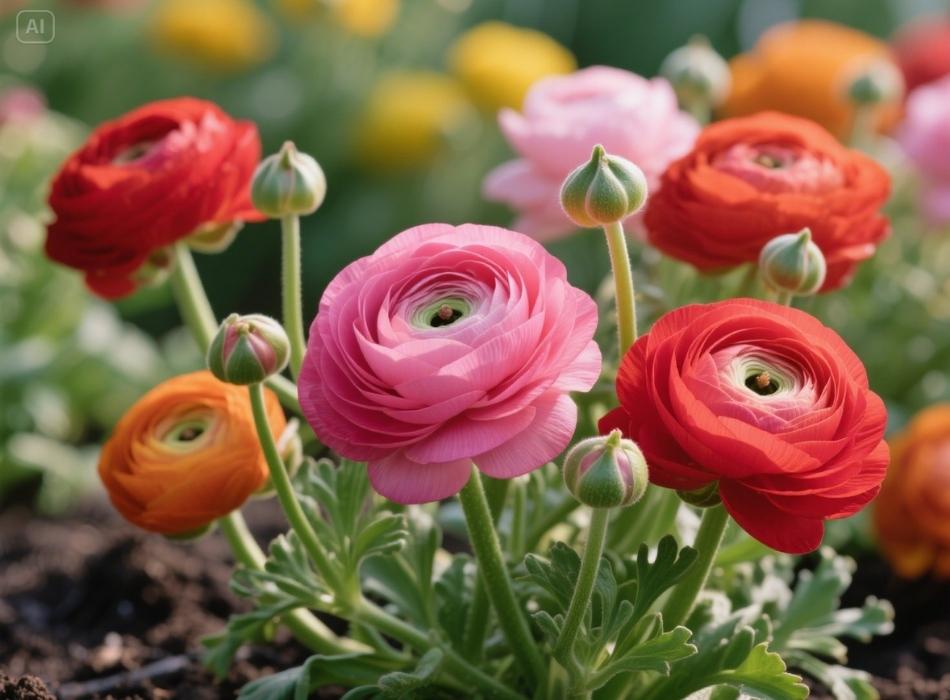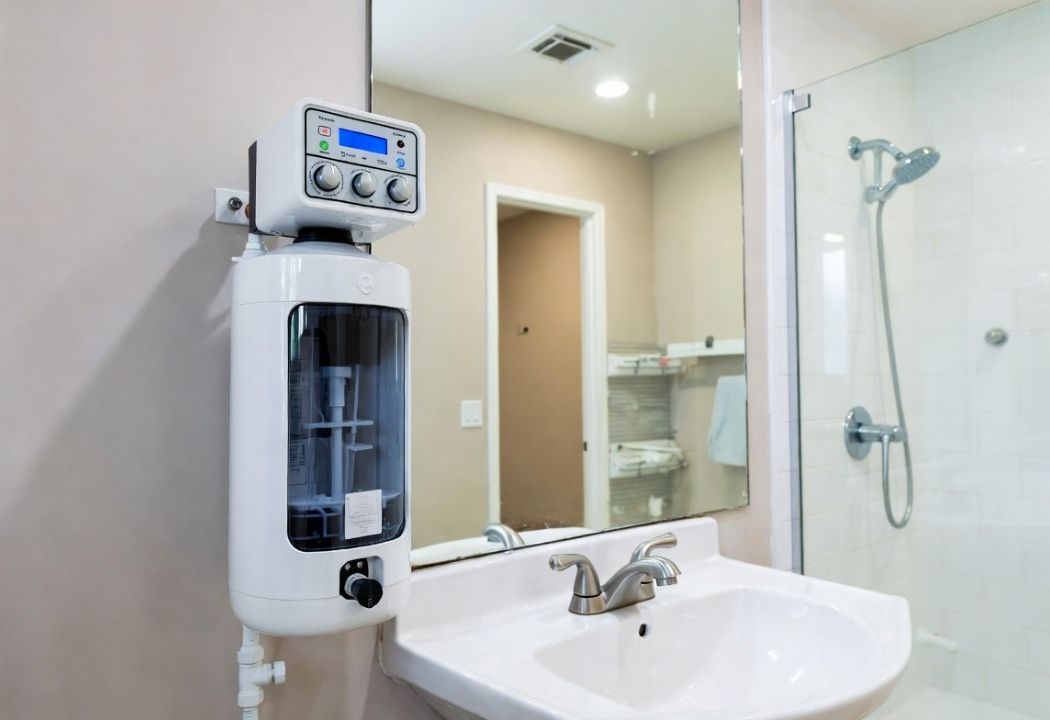Ranunculus, with their vibrant, layered petals and lush colors, are a favorite among gardeners and floral enthusiasts alike. If you live in USDA Zone 7 and want to grow these beauties, timing is everything. Planting ranunculus at the right time ensures you enjoy healthy, abundant blooms throughout the growing season.
This guide will help you understand when and how to plant ranunculus in Zone 7, along with tips for success to make your garden flourish.
Understanding Zone 7 and Ranunculus Growth Needs
Before digging into the “when,” it’s essential to know the basics about Zone 7 and ranunculus growth requirements:
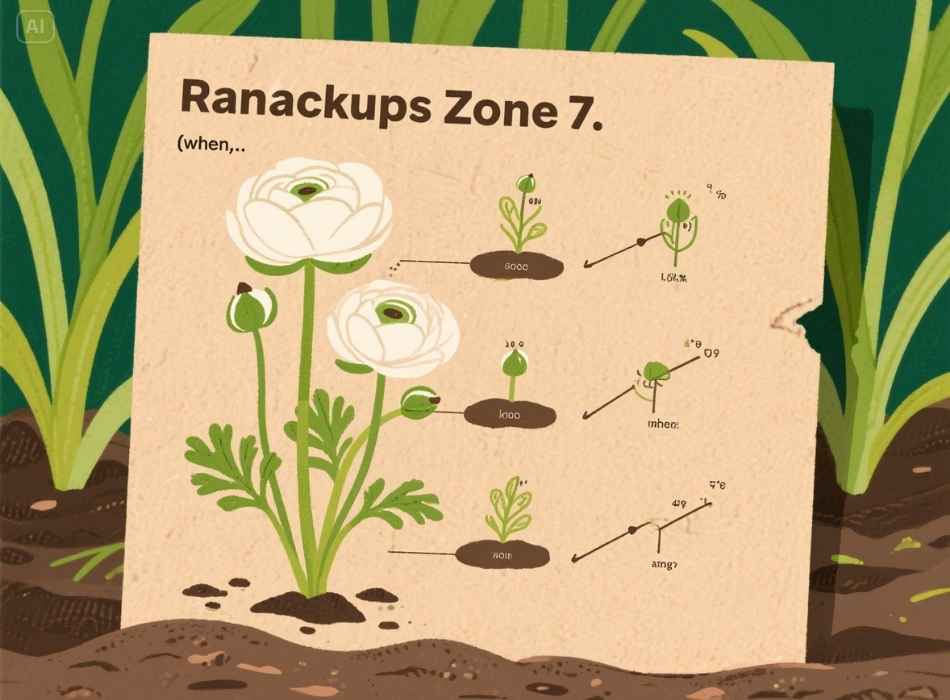
- USDA Zone 7 covers areas with an average minimum winter temperature of 0°F to 10°F. Examples include parts of Virginia, Tennessee, and the coastal regions of Oregon.
- Ranunculus thrives in cool, mild temperatures, making Zones 7 through 10 ideal for growing these flowers successfully.
- These bulbs, or “corms,” prefer well-draining soil, plenty of sunlight, and temperatures between 40°F and 75°F during their growth cycle.
Ranunculus is typically grown annually in most climates, meaning you’ll plant the corms, enjoy a season of gorgeous blooms, and replant annually. For Zone 7, timing your planting around seasonal temperature shifts is the key to success.
When to Plant Ranunculus Corms in Zone 7

For gardeners in Zone 7, the ideal planting window largely depends on whether you’re looking to grow ranunculus as:
- Fall-Planted Annuals
- Spring-Planted Annuals
1. Fall Planting
Planting ranunculus in the fall allows the corms to establish strong root systems during cooler weather. This method often leads to earlier and more vibrant blooms in late winter or early spring.
- Timing: The best time to plant ranunculus is in late October to early November when day temperatures cool to below 65°F, but the ground hasn’t frozen.
- Why it works: Unlike spring planting, fall-planted ranunculus corms benefit from a longer growing period. Through the winter months, they remain dormant but strengthen their roots, leading to lush flowers early in the spring.
2. Spring Planting
If you missed the fall planting window, don’t worry! Ranunculus can also be planted in early spring to bloom later in the season.
- Timing: Aim to plant corms in late February to early March after the threat of hard frost has passed.
- Why it works: While spring planting involves a shorter growing season, it still produces stunning blooms. Just be mindful that hotter summers may shorten blooming.
Pro tip: For both fall and spring planting, tracking local weather is critical. Take note of your area’s first and last frost dates to avoid early frost damage.
How to Prepare and Plant Ranunculus Corms
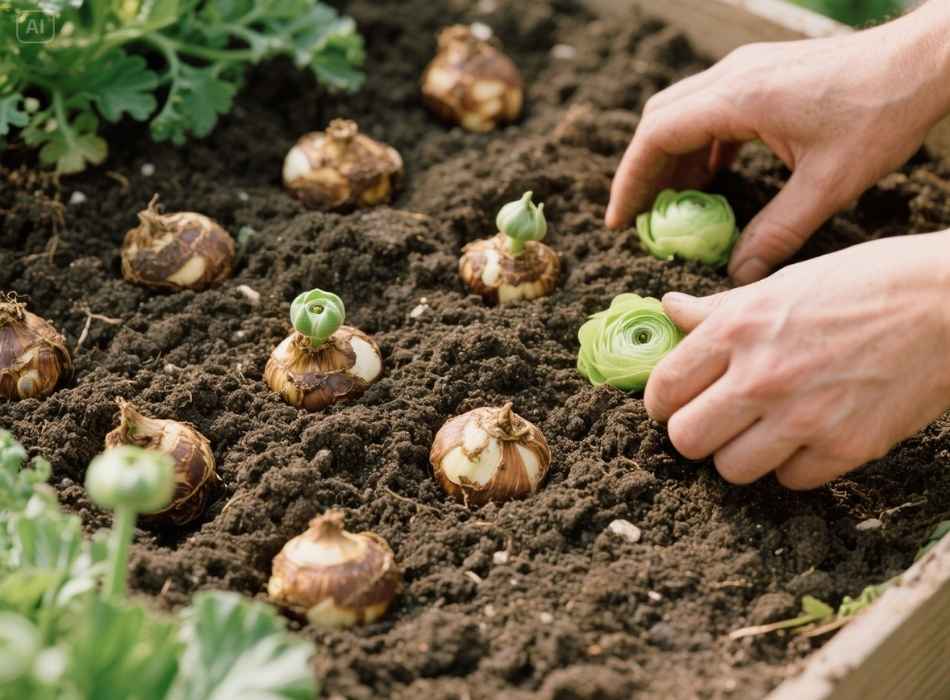
Planting ranunculus starts with proper preparation. Follow these steps to ensure your ranunculus thrives in Zone 7:
Step 1. Pre-Soak the Corms
Ranunculus corms resemble small, dry “claws” and require pre-soaking to jumpstart the growing process.
- Place corms in lukewarm water for 4 to 6 hours. Avoid over-soaking, as it may lead to rot.
- While soaking, change the water every couple of hours to keep it fresh and oxygenated.
Step 2. Choose the Right Location
Select a garden spot with full sun exposure and well-draining soil. Ranunculus dislikes soggy soil, which can cause the corms to rot.
Step 3. Amend the Soil
To ensure optimal growth:
- Sprinkle compost or organic matter into your soil for better nutrients.
- Aim for a slightly acidic to neutral pH (6.0 to 7.0).
Step 4. Plant the Corms
- Plant the corms claw-side down about 2 inches deep and 4 to 6 inches apart.
- Cover with soil and water thoroughly to help the roots establish.
Step 5. Mulch for Temperature Regulation
For fall planting, add a layer of mulch to protect the corms from colder winter temperatures and help retain soil moisture.
Pro Tip: If you’re planting ranunculus in containers, ensure the pots have good drainage holes to avoid waterlogged soil.
Caring for Ranunculus in Zone 7
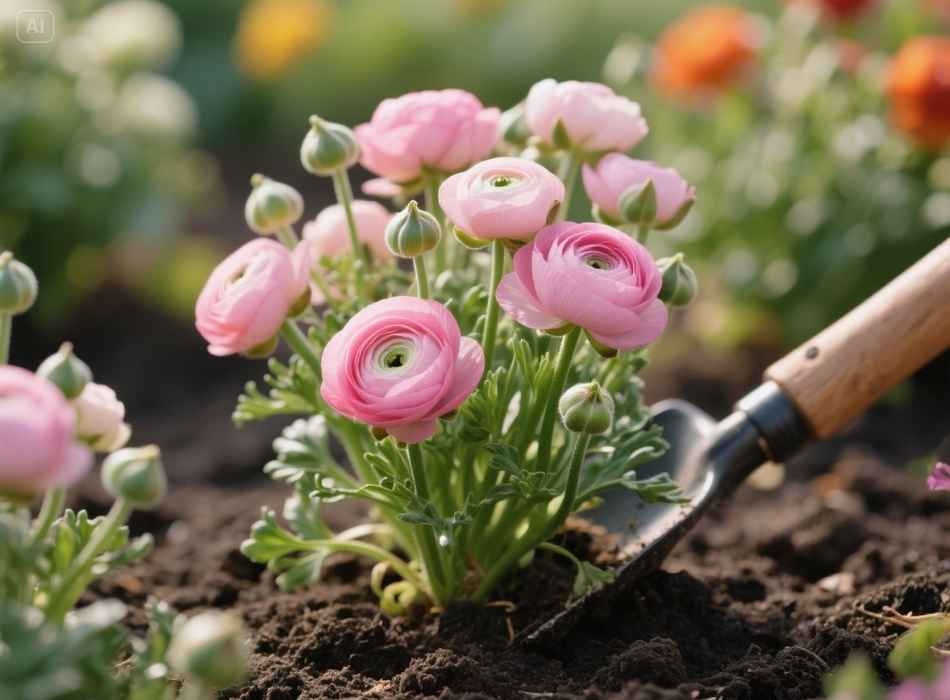
Once your ranunculus is planted, please give it the care it deserves to ensure jaw-dropping blooms.
Watering
- Consistent but not soggy: Water the soil lightly immediately after planting. From there, water only when the soil feels dry about an inch below the surface.
- Be cautious of overwatering, as soggy roots can lead to rot.
Fertilizing
- Use a balanced fertilizer (like 10-10-10) every 4 to 6 weeks during active growth to keep your ranunculus healthy.
- Gradually reduce fertilization as blooms begin to fade.
Managing Temperatures
- Ranunculus prefers cooler weather, so keep an eye on rising spring or summer temperatures.
- Consider providing shade if temperatures exceed 75°F.
Deadheading Blooms
Remove spent flowers to encourage fresh blooms and prevent the plant from wasting energy on seed production.
Pro Tip: If you’re fall planting and face severe winter conditions, consider covering your plants with row covers or frost cloths to protect them during freezing spells.
The Rewards of Timing It Right
For Zone 7 gardeners, the proper planting time will reward you with vibrant ranunculus blooms that rival even the most professional floral shops. Whether you’re planting in fall or spring, these cheerful flowers add a touch of elegance and color to any garden.
By following this guide, planning around frost dates, and giving your corms a good home, you can enjoy unparalleled blooms season after season.
Why not take the plunge and make ranunculus the jewel of your garden this year?







